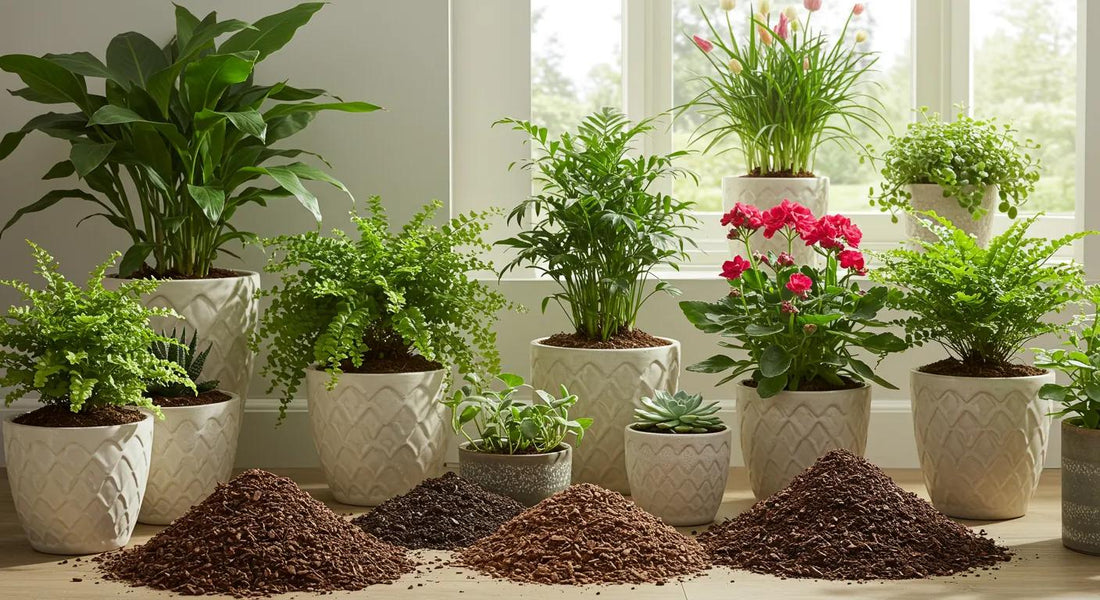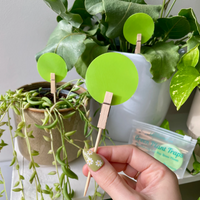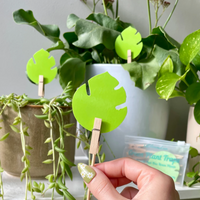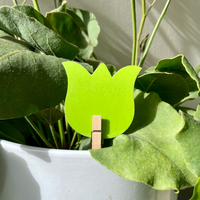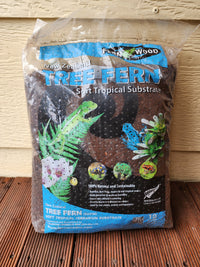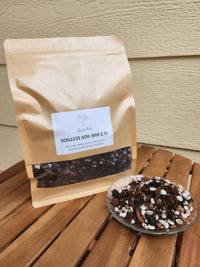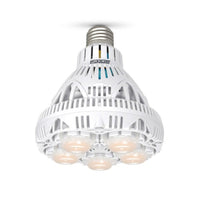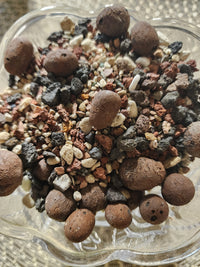Indoor potting mix is the engineered substrate that supports root health, balances water and air, and supplies or holds nutrients for houseplants, and choosing the right mix directly affects growth and pest risk. This guide explains what makes a potting mix top-rated for indoor plants in Australia, describes the essential ingredients used in premium soilless and chunky mixes, and outlines how to match mixes to plant types such as aroids, succulents and orchids. Many indoor gardeners struggle with soggy roots, fungus gnats or compacted media; the right substrate prevents these issues by improving drainage, aeration and moisture retention simultaneously. Below you will find snippet-style attributes that define top mixes, clear ingredient comparisons, plant-specific sample blends, DIY recipes using Leaf of Faith SA ingredients, and practical troubleshooting steps for common potting mix problems. Throughout this guide, we use practical recipes so you can choose or build the best potting mix for your indoor plants in Australian homes.
What Makes a Potting Mix Top-Rated for Indoor Plants in Australia?
A top-rated potting mix delivers the correct balance of drainage, aeration, moisture retention, nutrient capacity and pest resistance to suit a plant’s root habit and the indoor environment. Good mixes use a combination of chunky inorganic aggregates and fibrous organic components to create stable pore space while holding available water; this mechanism improves oxygen in the root zone and reduces pathogen risk. Australian indoor conditions—variable humidity and diverse watering routines—mean mixes should be chosen for how quickly they release water and how well they retain structural stability over time.
The next subsection lists and defines the core attributes you should prioritise when selecting or creating a premium indoor potting media.
Which Key Attributes Define the Best Indoor Plant Soil?

The best indoor plant soil is defined by five core attributes: drainage, aeration, moisture retention, nutrient holding capacity and pest resistance. Drainage controls how quickly excess water leaves the pot and prevents waterlogged roots; aeration supplies oxygen necessary for healthy root respiration and microbial balance. Moisture retention ensures plants have access to water between watering cycles without staying saturated, while nutrient holding capacity affects how long slow-release fertilisers remain available. These attributes together reduce disease risk and support steady growth in common houseplants, and understanding them leads to choosing specific ingredients to adjust each attribute.
This list summarises the attributes you'll use to choose or change a mix:
- Drainage: how fast excess water escapes the pot.
- Aeration: pore space for oxygen around roots.
- Moisture retention: available water stored for uptake.
- Nutrient holding: cation exchange and organic matter.
- Pest resistance: conditions that discourage larvae and pathogens.
These attributes directly inform which components to add to a mix and explain why the next section focuses on ingredient roles and comparisons.
How Do Drainage, Aeration, and Moisture Retention Affect Plant Health?
Drainage, aeration and moisture retention interact to determine root oxygen levels, water availability and microbial community balance; together they govern whether roots thrive or rot. Poor drainage or aeration creates anoxic pockets that encourage root rot pathogens and slow root growth, while excessive drainage produces drought stress and nutrient leaching. Symptoms of imbalance include yellowing leaves, slow growth, and soft or blackened roots; adjusting mix components such as perlite, pumice, or coco coir changes pore size and water-holding behaviour. Understanding these mechanisms makes it easier to correct problems quickly by altering mix composition or pot choice, which we address in troubleshooting later.
Why Is Pest Prevention Important in Potting Mixes?
Pest prevention is essential because many common indoor pests, notably fungus gnats, complete life cycles in moist, decomposing organic media and damage roots as larvae feed. Soilless mixes and chunky, fast-draining substrates reduce the habitat for larvae by limiting continuously damp surface layers and by encouraging aerobic microbes that compete with pests. Cultural controls—surface drying, top-dressing with coarse materials and avoiding over-watering—work with mix choices to lower infestation risk. These prevention strategies set up the rationale for selecting ingredients discussed in the next section and for using specific components to solve active pest or moisture problems.
What Are the Essential Ingredients in Premium Indoor Plant Potting Mixes?
Premium indoor potting mixes combine inorganic aggregates and fibrous organics so each ingredient contributes a defined structural or moisture role, producing predictable drainage and retention. Common components include perlite and pumice for aeration and drainage, coco coir or sphagnum moss for moisture buffering, tree fern fibre and bark for structure and longevity, and LECA or chunky bark for specialised aeration and epiphytic plant needs. Below is a quick comparison table showing key attributes and ideal uses to help you decide which component to add when tuning a mix. After the table, practical one-line benefits for each ingredient follow, and Leaf of Faith SA’s product names are noted where they match these materials.
Different mix components serve distinct functions in soilless blends and chunky mixes.
| Ingredient | Key Attribute | Ideal Use |
|---|---|---|
| Perlite (Super Coarse Perlite) | Lightweight, increases pore space | Fast-draining mixes; succulents and top-dressing |
| Coco Coir | Water retention with aeration | Aroids, general houseplants needing a moisture buffer |
| Tree Fern Fibre (Fernwood) | Fibrous structure, air pockets | Long-term structure in chunky mixes; epiphytes |
| Pumice | Stable mineral aggregate, drainage | Succulent/cacti mixes; long-lasting aeration |
| Orchiata Orchid Bark | Coarse bark, high airflow | Epiphytic orchids and mounted plants |
| LECA / PON-and-LECA MIX | Inorganic, water reservoir with air gaps | Semi-hydro or moisture-managed systems |
This table clarifies which component to add for specific performance goals and prepares you for short ingredient benefit summaries below.
- Perlite improves aeration and drainage without adding nutrients and is especially useful when mixed at 10–30% by volume for many houseplants.
- Coco coir offers neutral pH and strong water-holding capacity, but should be rinsed or buffered if needed, and works well at 20–40% in mixes for aroids.
- Tree fern fibre provides long fibres that hold moisture while maintaining air pockets, and pumice complements it by adding permanent drainage and structural stability.
When sourcing these components, Leaf of Faith SA stocks items such as Super Coarse Perlite, Fernwood Tree Fern Fibre, Orchiata Orchid Bark, Coco Chips, LECA and Pumice, which makes it simple to assemble premium mixes from named components for Australian indoor conditions.
How Does Perlite Improve Aeration and Drainage?
Perlite is a lightweight volcanic glass expanded by heat into porous white granules that increase macroporosity when blended into potting media. It improves oxygen availability at the root zone and speeds drainage, reducing the window of saturation that invites root pathogens. Practical mix ratios often range from 10 to 30% perlite by volume for general houseplants, increasing for succulents, where 40% or more gives a very free-draining texture. Compared with pumice, perlite is lighter and sometimes breaks down faster, so many growers combine both for immediate aeration and long-term structure.
What Are the Benefits of Coco Coir for Moisture Retention?
Coco coir is a fibrous, neutral-pH medium that holds water within fibre matrices while still providing air gaps for roots, making it a reliable moisture buffer. It rehydrates predictably and helps prevent rapid dry-outs in pots, which benefits aroids and many tropical houseplants that prefer steady moisture without waterlogging. Users should note that well-processed coco often needs occasional flushing to avoid salt buildup, and combining coco with chunky bark or perlite prevents compaction. For sustainable sourcing and consistent performance in Australia, Coco is a practical peat alternative in indoor mixes.
Why Use Tree Fern Fibre and Pumice in Soilless Mixes?
Tree fern fibre contributes durable, long fibres that form a stable, airy matrix to support roots and retain small pockets of moisture without compaction. Pumice is an inert volcanic aggregate that maintains permanent pore space and resists breakdown, preserving drainage over years and supporting vigorous root development. Together, they balance moisture and air for epiphytic plants and aroids, especially where repeated watering cycles occur; pumice resists breakdown better than perlite in the long term. These complementary roles explain why many premium chunky mixes include both fibrous and mineral components.
How Do You Choose the Right Potting Mix for Different Indoor Plants?
Choosing the right mix starts with identifying plant root habits, watering frequency, pot type and humidity—then matching those needs to mix attributes: high drainage for succulents, balanced retention for aroids, and very airy bark-based media for many orchids.
Sample blends help translate those attributes into workable mixes for home gardeners and provide a starting point you can tweak after observing plant responses. The table below summarises plant types, required attributes and recommended example ratios you can mix at home or assemble from individual components.
Match the mix texture to a plant’s natural root environment to reduce stress and maintenance.
| Plant Type | Required Mix Attributes | Recommended Blend (example ratios) |
|---|---|---|
| Aroids & tropicals | Aeration + moisture buffer | 40% coco coir: 30% chunky bark: 30% perlite/pumice |
| Succulents & cacti | Fast drainage, low retention | 50% pumice/perlite: 30% coarse sand, alternative: 20% organic |
| Orchids (epiphytic) | High airflow, coarse media | 80% Orchiata orchid bark: 20% sphagnum/LECA |
| General houseplants | Balanced retention and drainage | 50% coco: 25% perlite: 25% bark/ferny fibre |
These sample ratios suit common Australian indoor conditions and are starting points; adjust the coarse fraction up or down for drier or more humid homes. For convenience, Leaf of Faith SA offers components such as Coco Chips, Fernwood Tree Fern Fibre, Orchiata Orchid Bark and PON-and-LECA MIX that match the ingredients in the sample blends and simplify sourcing.
What Potting Mix Is Best for Aroids and Tropical Plants?
Aroids prefer an aerated but moisture-retentive substrate that mimics forest-floor leaf litter with chunky bark and moisture-holding organics to support large, fibrous root systems. A useful home blend is roughly 40% coco coir, 30% chunky bark or tree fern fibre, and 30% perlite or pumice to provide both water buffer and rapid drainage after watering. Watering guidance pairs with the mix: allow the top third to dry slightly between waterings while maintaining humidity to suit the species. If roots appear waterlogged or slow to recover, increasing perlite or pumice by 10% improves oxygen availability quickly.
Which Soil Mixes Suit Succulents and Cacti?
Succulents and cacti require very free-draining mixes with minimal fine organic matter so roots dry quickly and avoid rot; coarse pumice, perlite and small LECA work well as primary components. A practical ratio is 50–70% inorganic (pumice/perlite/LECA), 20–30% coarse grit or sand alternative, and a small organic fraction to anchor plants; avoid high coco content for true desert succulents. Repot every 2–3 years to refresh the structure and watch for soft stems or black roots as signs of overwatering. Using coarse aggregates from suppliers like Leaf of Faith SA helps maintain that fast-draining texture.
How to Select Orchid Potting Mixes for Australian Conditions?
Orchid mixes for epiphytic species should emphasise coarse bark (such as Orchiata Orchid Bark), chunky bits and optional sphagnum to balance water retention with airflow around the roots. In drier Australian indoor environments, include a small percentage of sphagnum or LECA to hold brief moisture while keeping most of the mix open and fast-draining. For wetter homes or over-wintering, increase bark fraction to improve drying between waterings and reduce pathogen risk. Choosing Orchiata or similar coarse bark gives predictable performance and is a common choice for growers managing Australian humidity and indoor temperatures.
How Can You Create DIY Potting Mixes Using Leaf of Faith SA Ingredients?

DIY mixes let you tailor substrate performance to specific plant needs while using named components available from Australian suppliers; simple, repeatable recipes reduce guesswork. Below are three copyable recipes for common houseplant groups that use Leaf of Faith SA product names where appropriate, followed by mixing tips and a short method to combine ingredients for consistent results. These recipes are practical starting points—test and adjust ratios after observing watering response and root health.
Simple recipes for indoor plant categories using accessible components:
- Aroid Mix: 40% Coco Chips + 30% Fernwood Tree Fern Fibre + 30% Super Coarse Perlite — ideal for Monstera and similar aroids.
- Succulent Mix: 50% Pumice + 30% Super Coarse Perlite + 20% LECA or coarse grit — for cacti and drought-tolerant succulents.
- Orchid Media: 80% Orchiata Orchid Bark + 20% Sphagnum Moss or small LECA — for epiphytic orchids needing high airflow.
After mixing, test a small portion by watering and monitoring drainage time; if water stands for longer than 30 minutes in a standard pot, increase the coarse fraction. Leaf of Faith SA’s range (Super Coarse Perlite, Coco Chips, Fernwood Tree Fern Fibre, Orchiata Orchid Bark, Pumice, LECA and PON-and-LECA MIX) makes assembling these blends straightforward and lets you buy individual components matched to each recipe.
What Are Simple Recipes for Custom Indoor Plant Soil?
These concise recipes are ready to use and adjustable by observation: Aroid Mix (40% coco: 30% fern fibre: 30% perlite), Succulent Mix (50% pumice: 30% perlite: 20% LECA), Orchid Media (80% Orchiata bark: 20% sphagnum/LECA). Measure by volume, mix thoroughly in a large tub, and dampen before potting to settle fines. Use these blends as starting points and tweak the coarse/inorganic fraction higher in warmer, drier homes. After potting, record plant response and adjust mixes gradually rather than making large changes at once.
How to Combine Perlite, Coco Coir, and Tree Fern Fibre for Optimal Results?
To combine perlite, coco coir and tree fern fibre, first rehydrate and fluff the coco if compressed, break up any dense clumps of tree fern fibre, then fold in perlite to preserve air pockets; avoid overworking the mix, which can crush particles. Use a ratio reflective of plant need—more perlite for drainage, more coco for retention—and mix in a clean container to ensure even distribution. Test the blend by watering a small sample and observing drainage and how readily the media holds shape without compacting. Adjust ratios in small increments, documenting outcomes so you can reproduce a successful custom mix.
What Common Potting Mix Problems Affect Indoor Plants and How to Solve Them?
Common potting mix problems include root rot from poor drainage, fungus gnat infestations in moist organic layers, and compaction that reduces aeration; each problem maps to specific mix causes and straightforward fixes. The table below links common problems to likely mix causes and the component-based fixes you can apply, using components stocked by Leaf of Faith SA where applicable. After the table, concise prevention steps and product-based remedies are provided to help you act quickly without unnecessary repotting where possible.
Use this problem→cause→fix mapping to prioritise corrective action.
| Problem | Likely Cause in Mix | Product Fix (component to add) |
|---|---|---|
| Root rot / waterlogged roots | Excess fine organic or poor drainage | Add pumice or Super Coarse Perlite; repot into a chunky blend |
| Fungus gnats | Constantly moist surface and decomposing organics | Top-dress with Pumice, LECA or coarse sand; replace surface layer |
| Soil compaction | High fine organic content, breakdown of structure | Incorporate Fernwood Tree Fern Fibre and pumice to restore porosity |
| Poor nutrient retention | Inert mix with no organic fraction | Add a small amount of coco coir or composted bark and use slow-release feed |
Diagnose by inspecting roots and surface moisture patterns; if roots are soft or black, repotting into a freer-draining mix with pumice or perlite is urgent. For fungus gnats, dry the surface, top-dress with LECA or pumice and consider biological controls; these are practical first-line responses before resorting to chemical options.
How Does Proper Potting Mix Prevent Root Rot?
Proper potting mix prevents root rot by ensuring excess water drains quickly and oxygen reaches roots regularly, breaking the anaerobic conditions root pathogens exploit. Adding coarse aggregates such as pumice or Super Coarse Perlite increases macropores and speeds drying, while fibrous materials maintain steady moisture capacity without waterlogging. Repot into a mixed substrate and prune any clearly necrotic roots, then allow the plant to recover in brighter, drier conditions. Regularly inspecting root health and adjusting the coarse-to-fine ratio provides a long-term preventive strategy.
What Are Natural Ways to Prevent Fungus Gnats in Potting Mix?
Natural prevention includes allowing surface layers to dry between waterings, using coarse top-dressings such as pumice or LECA to disrupt egg-laying habitat, and avoiding overuse of fine, decomposing compost in indoor pots. Beneficial nematodes or Bacillus-based biologicals are additional non-chemical controls for active infestations when cultural measures are insufficient. Replacing the top 2–3 cm of media with a coarse alternative and improving drainage reduces the risk of recurrence. Integrating soilless or chunky components from Leaf of Faith SA reduces larval habitat while maintaining plant moisture needs.
How to Avoid Soil Compaction and Improve Aeration?
Avoid compaction by including stable chunky ingredients—pumice, tree fern fibre and coarse bark—that retain pore space through repeated wetting and drying cycles, and by reducing the proportion of fine peat-like particles. When repotting, loosen the root ball and mix in 20–40% coarse fraction depending on plant needs, and choose pots with adequate drainage holes. Periodic top-ups with chunky components and occasional repotting every 1–3 years restore structure before compaction becomes severe. These maintenance steps keep roots aerobic and reduce stress-related decline in indoor plants.

